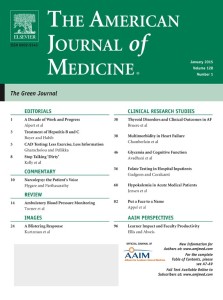Sleep Disorders, Primary Care, and the Patient Voice

The current issue of the American Journal of Medicine features a unique and insightful commentary by Project Sleep president Julie Flygare and Dr. Sairam Parthasarathy, Director of the University of Arizona Center for Sleep Disorders. Their piece explains how moving toward patient-centered healthcare will help improve the diagnosis and treatment of narcolepsy and other sleep disorders.
Has your primary care doctor ever asked you if you have trouble sleeping at night? Or if you have trouble maintaining wakefulness during the day? Probably not, as there are currently no standards for screening sleep disorders at the primary care level. Even though sleep disorder screening questionnaires exist (e.g., Cleveland Sleep Habits Questionnaire) national screening guidelines for adults 18-39 do not address sleep.

Although it would be a step forward for sleep-related questions to be more frequently included in patient intake assessments, I’m not sure it will be enough. I know I’ve always rushed to arrive early for appointments with new primary care physicians to fill out a stack of questionnaires I never end up discussing. No matter how much detail I provide or how nice my handwriting is, the doctor takes the papers from me confusedly, as if I’d handed him or her the installation instructions that came with my dishwasher. The doctor gives them a quick, polite shuffle then quickly places them in the back of my folder.
In a truly patient-centered model of care, primary care doctors will be trained not to just ask questions about sleep, but to listen to and understand the patient’s concerns. In the article, Julie recalls telling her primary care doctor about being tired and how it is limiting her ability to function in daily life, but the doctor dismisses her concern entirely. As the authors point out, medicine has traditionally focused on “hard” biomedical outcomes (observable and measurable) rather than the “soft” patient-centered outcomes such as sleep, pain, health-related quality of life, and patient satisfaction. Sleepiness isn’t observed by the vital signs measurements, the number on the scale, or the patellar reflex test. As many of us know all too well, sleepiness is felt, not seen. Tackling the under-diagnosis of sleep disorders at the primary care level won’t require a fancy new test, but it will require the patient voice.
Rebecca Fuoco, MPH





